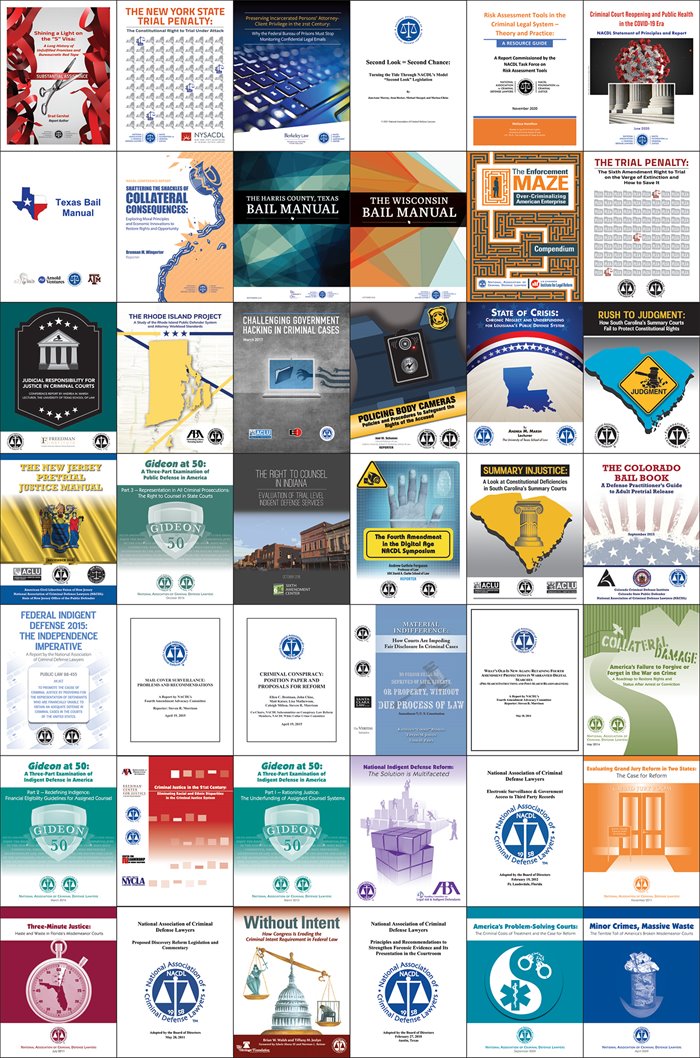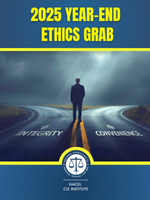Access to The Champion archive is one of many exclusive member benefits. It’s normally restricted to just NACDL members. However, this content, and others like it, is available to everyone in order to educate the public on why criminal justice reform is a necessity.
Editor’s Note: After 15 years at the helm of the nation’s criminal defense bar, Executive Director Norman L. Reimer is leaving his position. He created the “Inside NACDL” column. Month after month he pointed out the flaws in the system, set forth NACDL’s strategy to create change, and explained how each defense lawyer could play a role. The approximately 150 columns he wrote resonated with all advocates as they endeavored to preserve justice and due process.
One can accept things as they are, or one can try to change them. As defense lawyers we can accept systemic injustices, while struggling to minimize them in each case, plugging away the best we can for our clients. Or we can do more. We can seek a platform for reform. NACDL can be that platform because promoting criminal justice change is the NACDL way.
One lawyer whose client was subjected to a manifest injustice learned just how prepared NACDL is to embrace efforts to promote change. Brad Gershel, an associate at Ballard Spahr, represented a pro bono client who came to the United States from the Dominican Republic as a child. Years later, as an adult he was charged in a mortgage fraud case. Like many accused persons, he elected to cooperate with the government, with the principal inducement being a promise that the Department of Justice would arrange for him to obtain an “S” Visa. The S Visa is named after the statutory section of the Immigration and Naturalization Act that provides for that admission category. Established as part of the Violent Crime Control and Law Enforcement Act of 1994{1} 1 Public Law 103-322, enacted September 13, 1994. after the first World Trade Center attacks, Congress ostensibly created the S Visa to promote national security by incentivizing foreign nationals to provide information to deter terrorist attacks. Obtaining the S Visa involves a two-part process: initially there is a temporary status of up to three years during the pendency of an investigation in which an individual is cooperating, and then after the successful conclusion of the investigation and prosecution, the individual may be granted permanent resident status.
Mr. Gershel’s client kept his part of the bargain. But the government failed to deliver. The client never received the promised permanent resident status and after years of litigation to try to enforce the bargain, he was deported. Any defense lawyer can relate to the frustration and the sense of injustice Brad Gershel must have felt. But Brad was not content to just let the matter go. He connected with NACDL and worked closely with the NACDL policy department on a multiyear investigation to ferret out the underlying cause for what may appropriately be termed a government sanctioned bait and switch.
Shining a Light on the “S” Visa: A Long History of Unfulfilled Promises and Bureaucratic Red Tape{2} 2 The report is available at www.nacdl.org/SVisaReport. documents the failure of the U.S. government to properly administer the S Visa Program. This failure wreaks havoc not only on the lives of those like Brad Gershel’s client who put their trust in the promised reward, but it also hurts the government by frustrating the national security goals that led to the establishment of the program in the first place. The growing awareness that the S Visa will rarely materialize necessarily obligates defense lawyers to tell clients who are considering cooperation not to count on ever gaining the brass ring of permanent residency.
Somewhat surprisingly, the report, which garnered important media coverage upon its release,{3} 3 Trevor Aaronson, Federal Informants Are Often Promised Visas. They Rarely Materialize., The Intercept, June 29, 2021, available at https://theintercept.com/2021/06/29/informants-s-visa-broken-system. shows that the problem is not abject bad faith as a skeptical defense lawyer would justifiably assume, but “[t]o the contrary, the problem is bureaucratic red tape; administrative chaos; a flawed application process that is mysteriously guarded from public scrutiny; and a lack of sufficient government incentives to undertake the daunting and drawn out process. There is quite simply, a systemic unwillingness to issue these visas.”{4} 4 S Visa Report, at 6.
The report makes specific findings and provides a litany of tangible recommendations to remedy problems. The findings and recommendations, which have been adopted as formal NACDL policy, will now be the focus of advocacy efforts to restore the efficacy of the program.
The S Visa report typifies the consistent manner though which NACDL has become a change agent over the course of the past 15 years. It was the 42nd report published since 2009 designed to tackle fundamental defects in the nation’s criminal legal system and to provide practicing defense attorneys the tools to remedy those defects in service to clients.
As I conclude my tenure as NACDL’s executive director, I look back with pride on all that has been achieved in service to the members, the community, and society in so many ways. NACDL now has four core objectives: continuing education; support for the criminal defense bar; pro bono service; and public policy advocacy. Each of these core objectives is designed to realize NACDL’s vision (a society where all individuals receive fair, rational, and humane treatment within the criminal legal system) and its mission (to serve as a leader, alongside diverse coalitions, in identifying and reforming flaws and inequities in the criminal legal system, and redressing systemic racism, and ensuring that its members and others in the criminal defense bar are fully equipped to serve all accused persons at the highest level).
NACDL has achieved an unparalleled level of excellence in the pursuit of each of the core objectives that support its mission. Last year alone NACDL provided training for more that 20,000 lawyers, provided unprecedented resource and technical assistance across the broad spectrum of the criminal defense function, and supported numerous pro bono programs under the Return to Freedom Project, which has secured the release of hundreds of prisoners. In addition, NACDL provided first-rate advocacy in the courts through its signature Amicus and Strike Force programs and in other branches of federal and state government through its public policy department and the committees that support that department.
But it is the prodigious production of reports that support each of these core objectives and define NACDL as the preeminent voice for criminal justice reform. What is distinctive about NACDL’s advocacy and is so evident in these reports is that they reflect the real-world concerns of clients because they are the product of the criminal defense lawyer’s perspective. Many of you who regularly read this column have contributed in incalculable ways to the preparation of this body of work. For that, NACDL is tremendously grateful. With your help and with the support of NACDL’s committees, task forces, leaders and magnificent staff, NACDL has tackled pervasive systemic failure and injustice that is manifested across the board from inadequate support for public defense to procedural injustice; from denial of counsel to inadequate intent requirements; from Brady material suppression to collateral consequences; from pretrial injustice to the pervasive infliction of the trial penalty; from overly expansive use of conspiracy law to overcriminalization of everything. And the list goes on and on.
In the coming weeks, NACDL will publish three more impactful reports that are designed to propel reform: (1) a sequel to Without Intent, which will document the continued failure to include adequate mens rea elements in legislation; (2) a study of predictive policing and how it perpetuates racial injustice; and (3) a study of abortion criminalization, which will sound an alarm bell about a wave of expansive prosecutions that will likely follow any significant curtailment or reversal of Roe v. Wade.
When I look back over my tenure, I see this body of work as a true reflection of the strength and impact of NACDL. I know that for a busy practitioner, as I was throughout my career before coming to NACDL, it is hard to find the time to keep track of all the valuable materials out there. But I have no doubt that more than a few of these reports can make a difference regardless of your niche in the defense practice. They are all available for your perusal at https://www.nacdl.org/Landing/NACDLReports.
See below a graphic visualization of the entire collection. It is an image that I choose to share with The Champion readers in this, my last “Inside NACDL” column. See you next time — Outside NACDL.
About the Author
Norman L. Reimer served as NACDL’s Executive Director and Publisher of The Champion.
Norman L. Reimer
NACDL
Washington, DC
202-465-7623
nreimer@nacdl.org
www.nacdl.org
@NACDLExecDir














